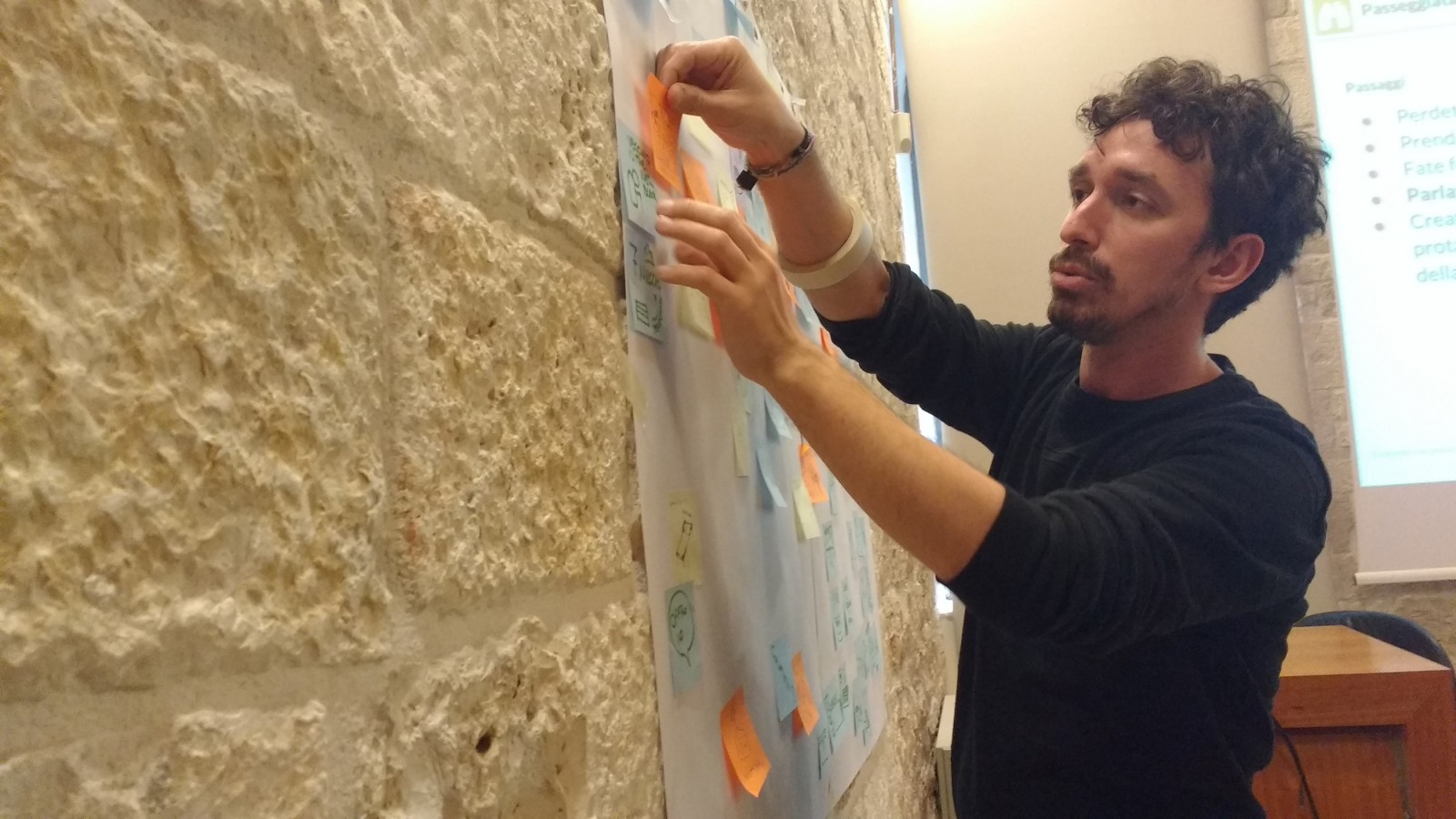
Topic: designing processes and enhance the collective intelligence.
Teacher: Guglielmo Apolloni
Tutor: Anna Cellamare
Coordinator SOS: Lucilla Fiorentino
Date: 26 e 27 Gennaio 2017
Day 1 – Presentation
The day begins with a warm-up, a phase in which participants come out of their comfort zone breaking the ice between them.
"Who I am? What am I good at? What do I expect?"
Each member of the group recognize himself in the stories of others.
During the workshop other worm-ups have been proposed, always aimed at putting the participants in relationship.
Guglielmo introduces to the Design Approach.**
What happens when design is applied to participatory processes?
Design approach appears visually as a tangle where the solution is represented as a set of iteration processes.
☛ Divergence and convergence
☛ Create choices / Make choices
☛ The importance of the "tiny number of people". To solve "the problem" of a few people.
☛ The use of narrative device. Which narrative is best for social innovation?
Challenge presentation
«How can we trigger positive partnerships between two worlds that do not speak the same language: SOS and the inhabitants of Bari Vecchia?»
«What are the possibilities of the school? The city can use its spaces. The school can use the city's spaces? How?»
☛ Draw the challenge
Using drawing as a neutral language.
☛ Become a Storyteller!
We took a walk in Bari Vecchia.
Mind map
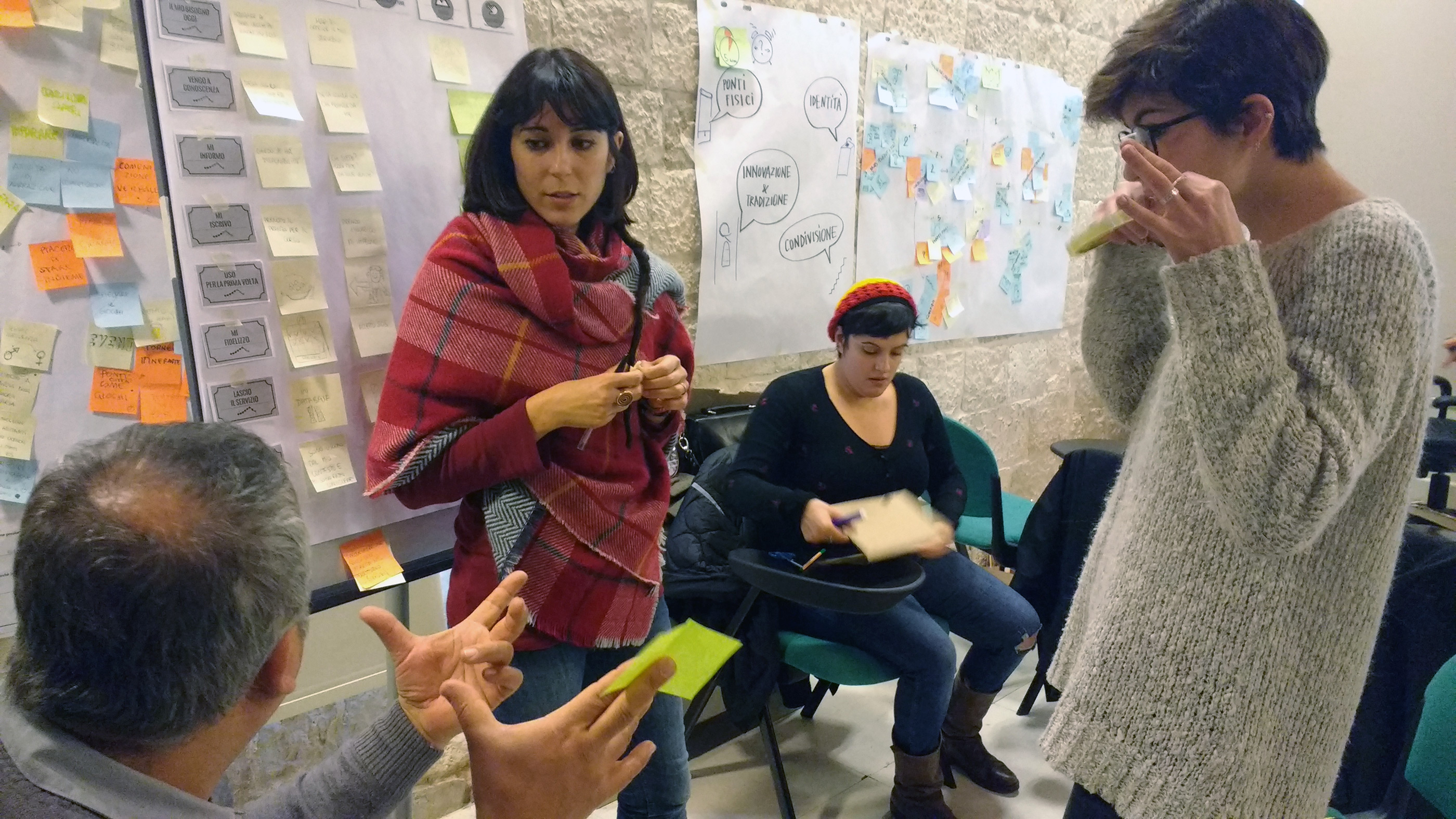
Open approach: we are in the first phase, the phase of "divergence", the phase of the research. Not seeking for solutions to the "problem". Stories!
☛ www.designkit.org – what methods to create impact
☛ www.diytooolkit.org – (find your tool)
☛ www.strategyzer.com – (canvases, tools and more)
Asking for feedbacks expose you to a fragile situation.
Brainstorming + Clustering
social innovation - physical bridges - reception and hospitality - transport / mobility - iconography - senses - borders - good / bad contrast - identity - signs - verbal communication - innovation / tradition - sharing.
☛ Poll and division of the group into areas of interest:
• Physical bridges
• Identity
• Innovation / tradition
• Sharing
☛ Knowledge and use of the tools:
• Personas Canvas
• How Might We Question
• Brainstorming
☛ Goal:
The creation of a Minimum Loveable Product, that is to build a service that a small group of people will love.
☛ Idea Canvas:
How does it work / what is it? / Why is it important?
Storyboard/ Prototipo/ Test
☛ Goal: Imagine the newspaper headlines three years after the realization of the proposed services.
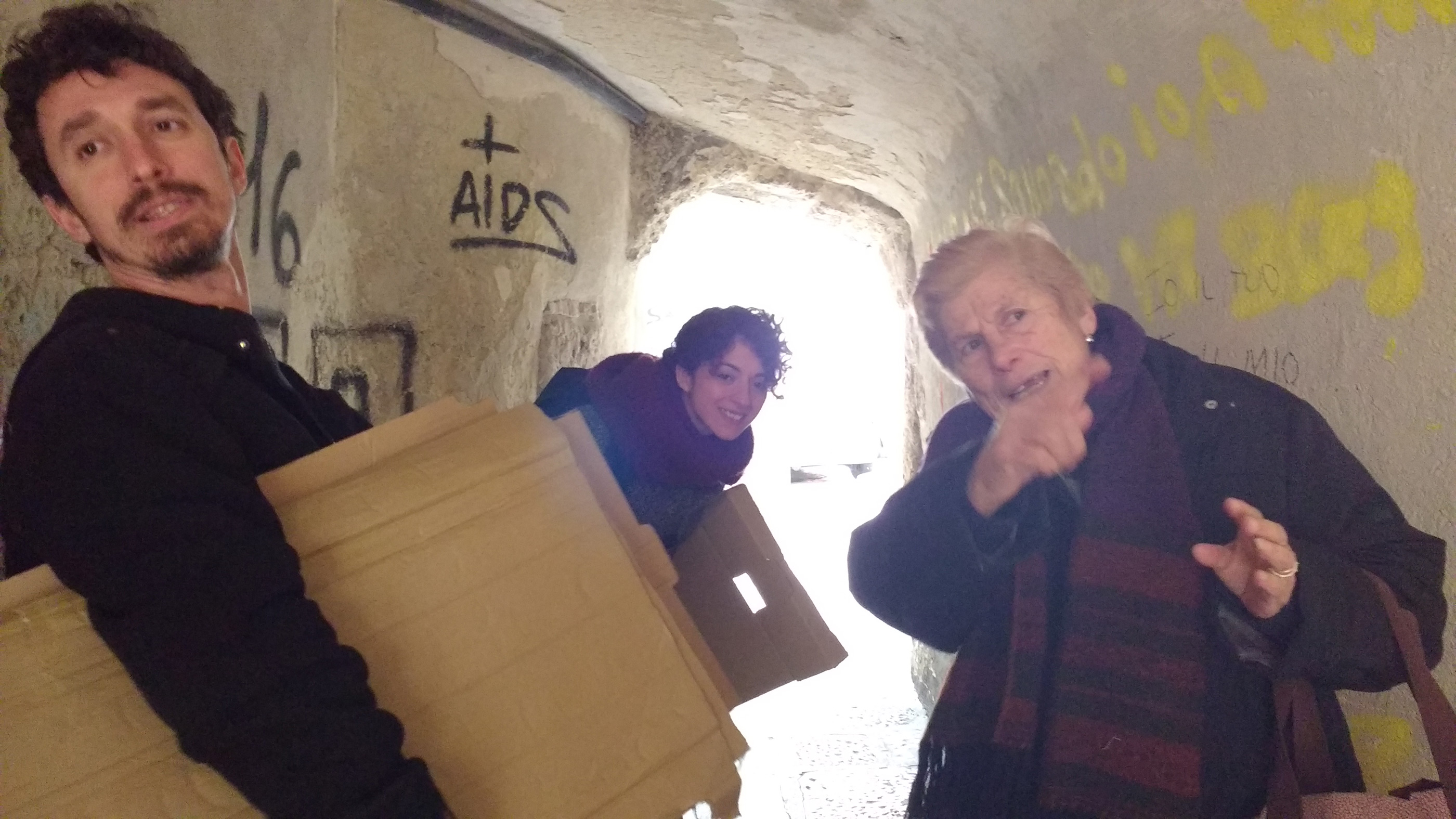
Day 2 – Le 4 idee canvas + test*
*At this stage the outcome is more important than the output. Feedback - The group gives feedback using the formula: "I like ..." to highlight the strong points "I wish ..." to discuss critical issues in a constructive way
Outputs Presentation
1) “Grandma Portia Starter Pack”
It involves various professionals in a social design project. In order to transmit the traditional "knitting" knowledge, the Grandma Portia project put different stakeholders on a network: videomakers shooting video tutorials, makers printing PLA textures inspired by grandmothers embroidery, designers who design using the two languages (SOS - technology / Bari Vecchia - tradition). Products creation to make the project sustainable.
☛ Video
2) “The orecchietta saves St. Nicholas school”
Ti bring the makers of Bari (women who prepare homemade pasta on the streets) within SOS. A course that could put in relation the Fablab makers to the "orecchiette makers". Eg: Culinary kit made with laser cutting, 3d printing and territorial communication. The group tested the process by filling in the online idea submitting form on SOS website.
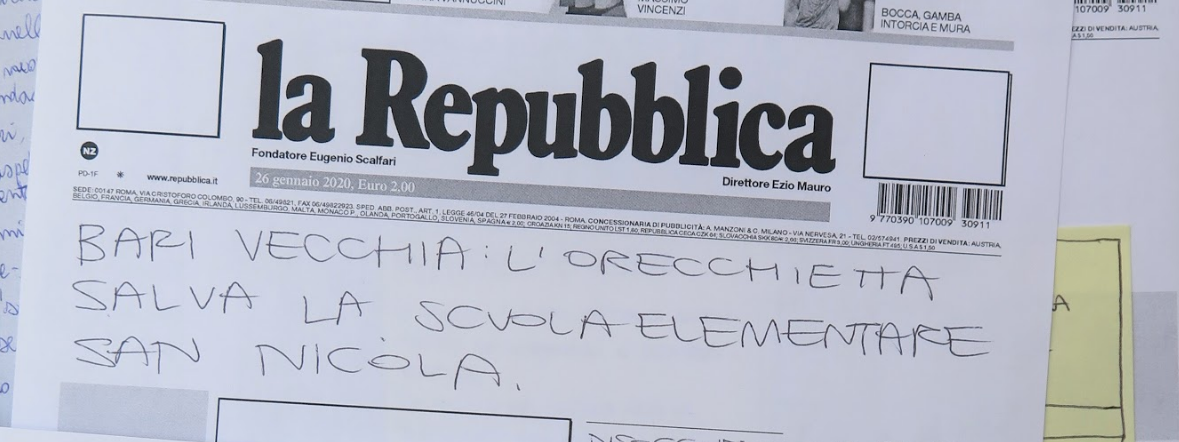
3) “Community Bridges. The relocation of SOS”
Database and mapping service (eg. Lunch) Goal: to activate services within the Old Town. To meet SOS needs (eg to host teachers and students) involving citizens as HOST (database with available users / service mapping / widespread totems). Transparent feedback system (evaluation by users with popularity starlets).
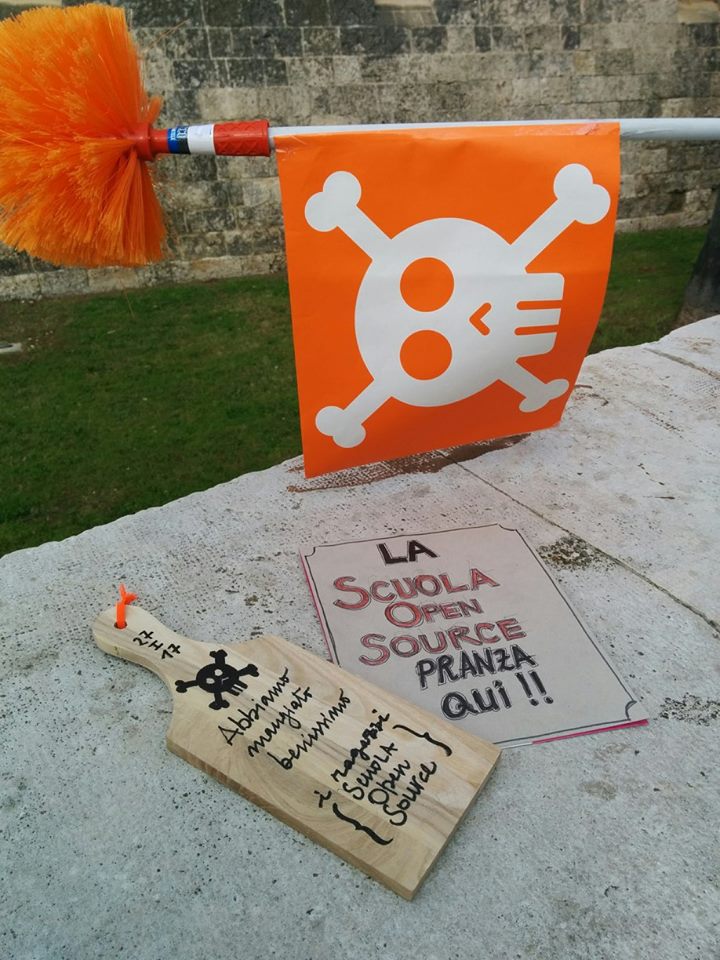
4) “SOS BARI VECCHIA”
The service is about the theme of sharing and active citizenship. The proposal is the creation of "outdoor days" as a neighborhood dinner, photographic exhibitions, SOS work exposures. (Shared dining test).
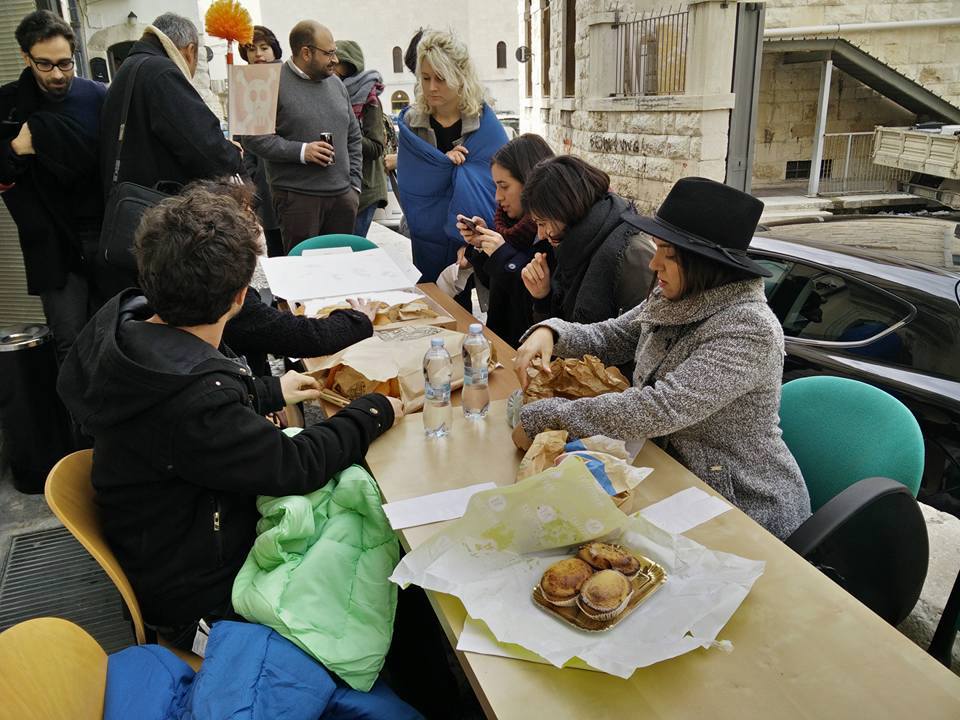
Best Practices
Anna presented the story of two projects on the territory (on different levels):
Make People Do Lab - An Apulian reality that has created workshops – involving craftsmen and designers – aimed at the transmission of "know how".
Avo Veii Trabalhar - A social design project that uses language crafts / design as a practice and seniors power of intervention in society. ☛ More info.
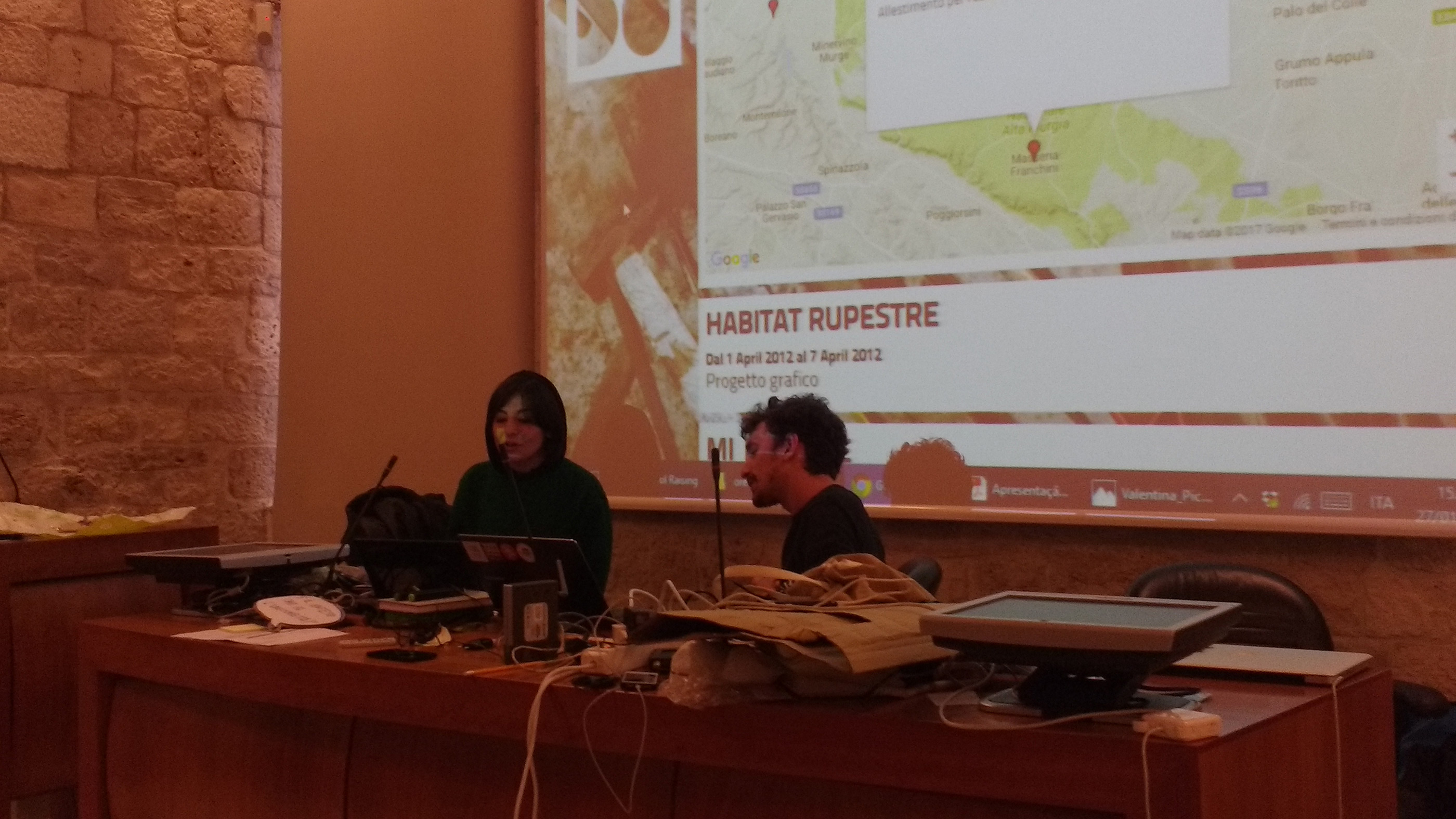
Process Blueprint
The last tool within the workshop was the blueprint. The group found out they imagined prototypes and MLP with users and with very similar characteristics (like grandmas and ladies of the neighborhood).
The group decided to use the Blueprint tool collectively: they experimented with the possibilities offered by the instrument by integrating together the different ideas and using the need to mix tradition and innovation (which emerged in all groups) as a guideline.
Identification of critical issues (eg, the emergence of black economy).
Detecting touch points (like the need to have "mediators" such as Mr. Michele, president of ACLI and Mr. Vito, the official "dealer" of the bran destined to all the ladies of Bari Vecchia.
The use of the Blueprint responded to the suggestions had during the workshop (to meet basic needs such as dining, hosting, networking).
It also allowed to have a future vision, a follow-up of the proposed service and the ability to locate it in a union place (e.g. a neighborhood kitchen, a shared kitchen, workshop space, events space). One can imagine a flexible management, a spin off of La Scuola Open Source (for example, a cooperative that runs the kitchen). You can imagine the presence of a facilitator / moderator of the district. Or, different arrangements for rewarding: we can imagine a crowdfunding or an application in a tender for the structural layout of the kitchen.
Most of the participants is willing to continue to work on the project – so let's trust the process! :)
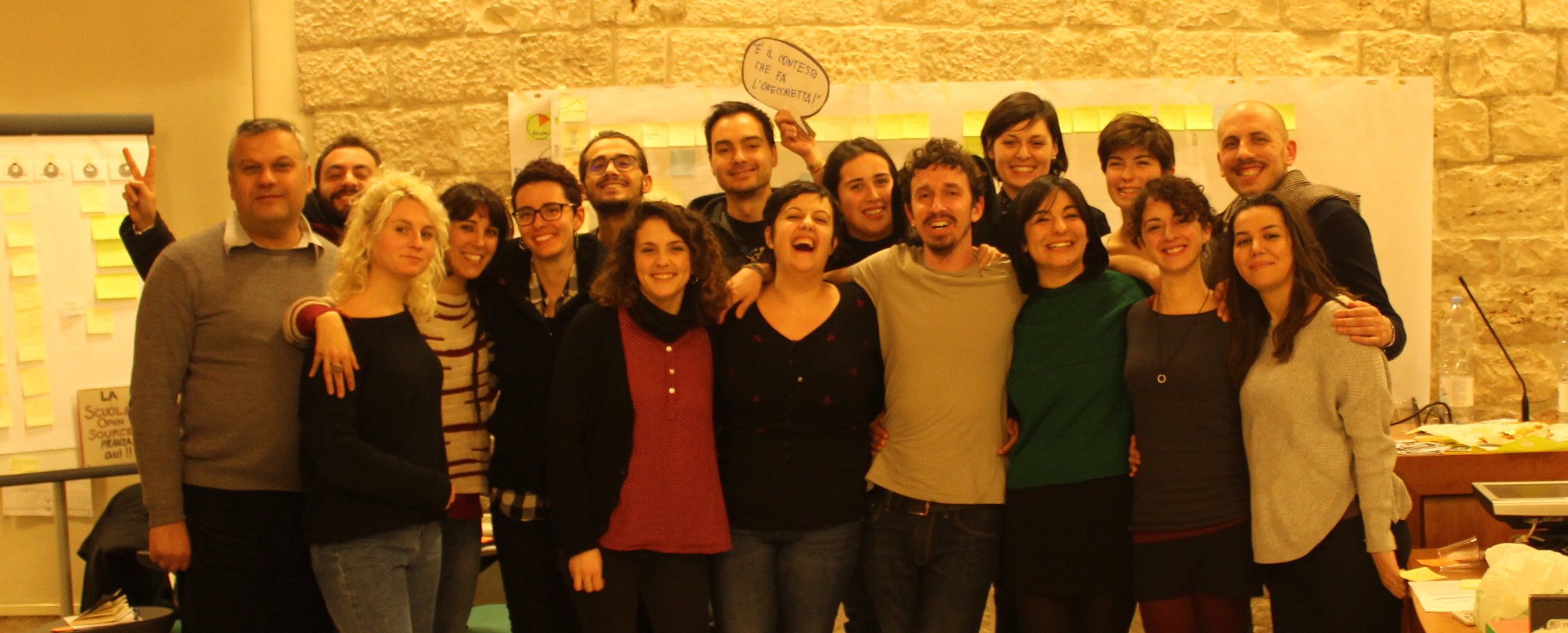
OUTPUT
Editing: Anna Cellamare, with Lucilla Fiorentino
Translation: Lucilla Fiorentino
Photo credits: Francesca Schioppo, Maicol Urbinati, Anna Cellamare


